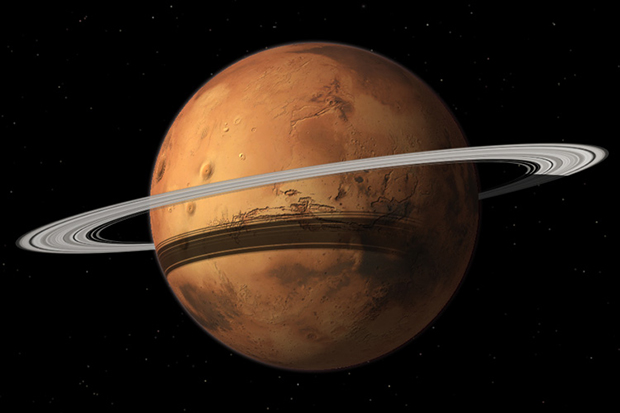-
Tips for becoming a good boxer - November 6, 2020
-
7 expert tips for making your hens night a memorable one - November 6, 2020
-
5 reasons to host your Christmas party on a cruise boat - November 6, 2020
-
What to do when you’re charged with a crime - November 6, 2020
-
Should you get one or multiple dogs? Here’s all you need to know - November 3, 2020
-
A Guide: How to Build Your Very Own Magic Mirror - February 14, 2019
-
Our Top Inspirational Baseball Stars - November 24, 2018
-
Five Tech Tools That Will Help You Turn Your Blog into a Business - November 24, 2018
-
How to Indulge on Vacation without Expanding Your Waist - November 9, 2018
-
5 Strategies for Businesses to Appeal to Today’s Increasingly Mobile-Crazed Customers - November 9, 2018
Someday, Mars’ largest moon will put a ring on it
Astronomers have long known that Phobos, the larger of Mars’s two moons, is orbiting ever-closer to the Red Planet, by some seven feet each century. The study, published in the journal Nature Geoscience, suggested only these four planets will not be with rings in the future.
Advertisement
So when will Phobos put a ring on it? As it tumbles around Mars, the planet’s gravity tugs unevenly on the body of Phobos, which is thought to be a captured asteroid filled with fractures and cavities and which is not as sturdily held together as Earth’s Moon, for example. A mere 16 miles in diameter, the ruddy, cratered satellite is being reeled in by Mars’ gravity, which means eventually, Phobos should crash into the Red Planet.
New modeling indicates that the grooves on Mars’ moon Phobos could be produced by tidal forces – the mutual gravitational pull of the planet and the moon.
To determine the “rock mass strength” of Phobos, Black and Mittal used a model employed by engineers who work on massive underground construction projects on Earth. This is because decades of study have revealed that Phobos is structurally unsound and riddled with fractures, pores, and rubble. Estimating the cohesiveness of Phobos, they concluded that it is insufficient to resist the tidal forces that will pull it apart when it gets closer to Mars.
Dismembering it is analogous to pulling apart a granola bar, Black said, scattering crumbs and chunks everywhere. Moons that were bigger than Phobos would have broken apart to form rings or crashed into their hosts already. The Martian ring will last for at least 1 million years – and perhaps for as long as 100 million years, according to the study. Instead, Phobos is likely to leave a dark and dusty ring, although it would increase Mars’ overall brightness somewhat and possibly cast shadows on the surface.
What makes the crash and formation of the ring more inevitable is the fact that Phobos is highly fractured and composed of weak materials and rubbles. “Over time it would spread out and get wider, reaching the top of the Martian atmosphere in a few million years, when it would start losing material because stuff would keep raining down on Mars”. The resulting rings would be similar in some ways to Saturn’s. But for anyone living on Mars tens of millions of years from now, the Phobos Ring will be a permanent fixture in the sky.
Black and Mittal, both in UC Berkeley’s Department of Earth and Planetary Science, were drawn to the question of what might happen to Phobos because its fate is expected to be so different from that of most other moons in our solar system.
Studying such moons is relevant to conditions in our early solar system, Mittal said, when it is likely there were many more moons around the planets that have since disintegrated into rings – the suspected origins of the rings of the outer planets.
Advertisement
Intriguingly, this ring-building scenario may have played itself out numerous times before in the Solar System’s history. Although given the 30 million-year forecast for Mars-cloudy with a chance of fiery, dismembered moon chunks-I’m honestly not sure how I feel about that possibility.




























